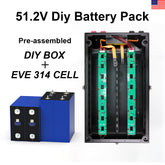Warum sich mein 36-V-Lithium-Akku von Black & Decker nicht aufladen lässt
Verschiedene Faktoren können dazu führen, dass Ihr Black & Decker 36V Lithium-Akku nicht mehr lädt. Diese Probleme können mit dem Akku selbst, dem Ladegerät oder äußeren Umwelteinflüssen zusammenhängen. Sehen wir uns die häufigsten Gründe für Ladefehler an.
- So beheben Sie ein Ladeproblem bei einer 36-V-Lithiumbatterie von Black & Decker
- Wie sich die Temperatur auf das Laden Ihres Black & Decker 36V Lithium-Akkus auswirkt
- Was tun, wenn Ihr Black & Decker 36-V-Lithium-Akku immer noch nicht aufgeladen wird?
Batteriekontakte sind verschmutzt oder korrodiert
Manchmal können die Kontakte zwischen Akku und Ladegerät verschmutzen oder korrodieren, wodurch der Akku nicht mehr richtig geladen wird. Die Reinigung der Kontakte ist eine einfache, aber effektive Lösung. Mit der Zeit können sich Staub, Schmutz oder Rückstände auf den Kontakten ansammeln und den Stromfluss behindern. Reinigen Sie die Akkupole mit einem trockenen Tuch und entfernen Sie alle Ablagerungen.
Probleme mit dem Ladegerät
Wenn Ihr Ladegerät nicht richtig funktioniert, lädt sich Ihr Akku nicht auf. Ladegeräte können mit der Zeit verschleißen oder interne Fehler aufweisen, die die Stromübertragung zum Akku verhindern. Bevor Sie das Ladegerät austauschen, prüfen Sie seine Funktionsfähigkeit, indem Sie es mit einem anderen kompatiblen Akku testen oder die Steckdose überprüfen.
Überhitzung des Akkus oder Ladegeräts
Lithiumbatterien reagieren empfindlich auf extreme Temperaturen. Wenn Ihre Black & Decker 36V Lithiumbatterie oder Ihr Ladegerät zu heiß wird, kann der Ladevorgang aus Sicherheitsgründen abgebrochen werden. Achten Sie darauf, dass Sie die Batterie in einem gut belüfteten Bereich laden und vermeiden Sie direkte Sonneneinstrahlung oder heiße Umgebungen.
>>Siehe auch: So erwecken Sie eine leere AA-Batterie wieder zum Leben
So beheben Sie ein Ladeproblem bei einer 36-V-Lithiumbatterie von Black & Decker
Sobald Sie einige mögliche Ursachen für Ihr Ladeproblem identifiziert haben, ist es Zeit, das Problem zu beheben. Befolgen Sie diese Schritte, um die Ursache des Problems zu ermitteln und zu beheben.
Schritt 1: Überprüfen Sie den Akku und das Ladegerät auf Schäden
Überprüfen Sie Akku und Ladegerät visuell auf Beschädigungen. Achten Sie auf Risse, Dellen oder Brandflecken am Akku oder Ladegerät, da diese auf eine Fehlfunktion hinweisen können. Bei größeren Schäden kann ein Austausch des defekten Bauteils erforderlich sein.
Schritt 2: Überprüfen Sie die Ladegerät- und Batterieanschlüsse
Stellen Sie sicher, dass das Ladegerät fest mit der Stromquelle und der Batterie verbunden ist. Bei einer losen Verbindung kann es sein, dass die Batterie nicht mit Strom versorgt wird. Überprüfen Sie außerdem, ob das Ladegerät einwandfrei funktioniert, indem Sie es mit einer anderen Batterie testen.
Schritt 3: Führen Sie einen Reset durch
Einige Akkumodelle von Black & Decker verfügen über eine Reset-Taste oder erfordern einen Neustart, um die ordnungsgemäße Funktion wiederherzustellen. Wenn Ihr Akku über eine Reset-Funktion verfügt, drücken Sie die Reset-Taste, um die normale Ladefunktion wiederherzustellen. Alternativ können Sie das Ladegerät ausstecken, einige Minuten warten und es dann wieder anschließen, um zu prüfen, ob das Problem dadurch behoben wird.
Wie sich die Temperatur auf das Laden Ihres Black & Decker 36V Lithium-Akkus auswirkt
Lithium-Ionen-Akkus, wie der in Ihrem Black & Decker 36V, reagieren empfindlich auf Temperaturschwankungen. Das Laden eines Akkus bei extremer Kälte oder Hitze kann zu Fehlfunktionen oder Schäden führen. Es ist wichtig, den Akku innerhalb des empfohlenen Temperaturbereichs zu laden, normalerweise zwischen 10 °C und 29 °C.
Laden bei kaltem Wetter
Wenn Sie versuchen, Ihren Black & Decker 36V Lithium-Akku bei kaltem Wetter (unter 10 °C) aufzuladen, können die chemischen Reaktionen im Akku verlangsamt werden, was ein ordnungsgemäßes Laden verhindert. Lassen Sie den Akku in diesem Fall auf Raumtemperatur erwärmen, bevor Sie erneut versuchen, ihn aufzuladen.
Laden bei heißem Wetter
Das Laden eines Akkus bei hohen Temperaturen (über 30 °C) kann ebenfalls zu einer Überhitzung des Akkus und damit zu Schäden an den internen Komponenten führen. Achten Sie beim Laden Ihres Akkus immer auf einen kühlen, trockenen Ort und laden Sie ihn niemals in direkter Sonneneinstrahlung oder im Auto.
>>Siehe auch: In Reihe oder parallel geschaltete Batterien. Was sind die wichtigsten Unterschiede?
Was tun, wenn Ihr Black & Decker 36-V-Lithium-Akku immer noch nicht aufgeladen wird?
Wenn Ihr Black & Decker 36-V-Lithium-Akku nach der Fehlerbehebung immer noch nicht lädt, können Sie noch ein paar weitere Schritte unternehmen.
Kontaktieren Sie den Black & Decker-Support
Wenn für Ihren Akku noch Garantie besteht, wenden Sie sich am besten an den Black & Decker-Kundendienst. Dieser kann Ihnen möglicherweise Lösungen anbieten oder den Akku bei einem Defekt sogar austauschen. Halten Sie Ihre Produktinformationen und Garantiedetails bereit, wenn Sie sich an den Kundendienst wenden.
Erwägen Sie eine professionelle Reparatur oder einen Austausch
Wenn Sie alle Schritte zur Fehlerbehebung durchgeführt haben und Ihr Black & Decker 36V Lithium-Akku immer noch nicht geladen werden kann, ist es möglicherweise an der Zeit, den Akku oder das Ladegerät auszutauschen. Dies mag zwar teuer erscheinen, ist aber oft die effizienteste Lösung. So sparen Sie sich unnötige Zeit und Geld bei der Behebung eines irreparablen Problems.
Warum Ihr Black & Decker 36-V-Lithium-Akku nicht lädt, kann verschiedene Ursachen haben, von verschmutzten Kontakten bis hin zu Umweltbedingungen. Durch sorgfältige Überprüfung von Akku und Ladegerät, die Befolgung der richtigen Schritte zur Fehlerbehebung und regelmäßiges Laden können Sie die meisten Probleme lösen. Sollte das Problem weiterhin bestehen, wenden Sie sich bitte an Black & Decker oder einen professionellen Reparaturservice. Halten Sie Ihre Geräte in gutem Zustand, damit Sie Ihre Werkzeuge – ob Heckenschere oder andere Akkugeräte – ohne weitere Unterbrechungen nutzen können.
Denken Sie daran: Regelmäßige Wartung und Pflege verlängern die Lebensdauer Ihrer Batterie und stellen sicher, dass sie immer optimal funktioniert.
























Leave a comment
All blog comments are checked prior to publishing